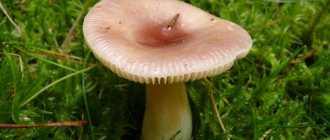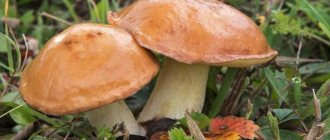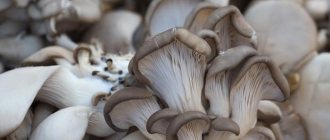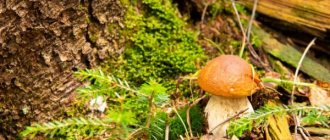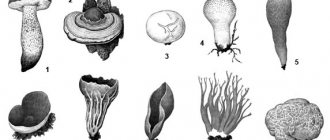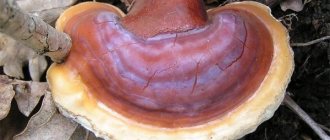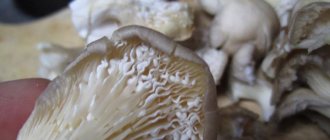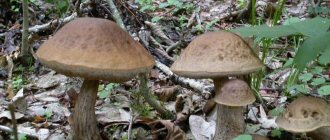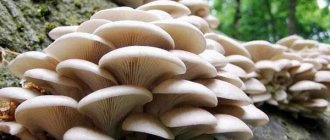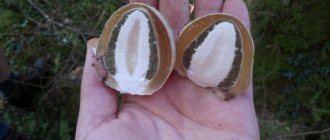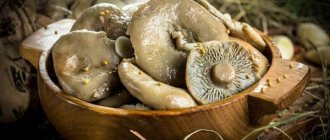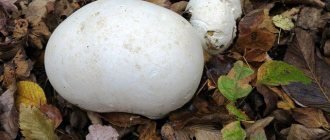It's difficult to meet a person who doesn't like mushrooms. The versatile fruiting bodies can be eaten fried or boiled, and delicious pies can be made with them. Some lovers are able to eat them even in their original form. What mushrooms are suitable for this use? Just don’t say it’s russula. No, for these purposes it is better to take truffles, saffron milk caps and porcini mushrooms. Is it possible to eat oyster mushrooms raw? Today we will talk about this.
Tastes could not be discussed
Indeed, if one person thinks that such a meal can hardly impress, then the other will try to get a new portion of fresh mushrooms at every opportunity. Can oyster mushrooms be eaten raw? Yes, and not only them. Camelina, for example, is the only milky mushroom that can be eaten raw. It contains a lot of protein, fiber and minerals. Their calorie content is only 26 cal per 100 g of product.
You don’t even have to cook the saffron milk caps, just sprinkle them with salt. But no one canceled the experiments, so cut the fruiting bodies into thin slices, sprinkle with salt and pepper, add a little lemon juice. It turns out to be a very original snack. As for porcini mushrooms, you can only eat the caps. Another variety that is an overseas rarity in our area is the truffle. This is a mushroom from Europe.
Edible or not: how to determine
Not only beginners in “quiet hunting”, but also avid mushroom pickers can confuse an edible mushroom with a poisonous one. This happens because there is no single way to distinguish them from each other. However, there are characteristic signs that will help you reap a good harvest without harming your health:
- There is no ring or so-called “foam” on the stem.
- The pulp has a tubular structure (poisonous ones, as a rule, have a lamellar cap).
- The mushroom pulp on the inside has a lighter shade compared to the cap.
- The smell of edible fruits is pleasant, not pungent and not repulsive.
Characteristic signs of poisonous mushrooms
Edible mushrooms have all or almost all of the listed signs. But if all this is characteristic of the mushroom found, but it still seems suspicious, you should refuse to eat it.
So familiar
And yet, why are many people interested in the question of whether it is possible to eat oyster mushrooms raw? First of all, because this particular mushroom grows in abundance in every forest belt, it is sold in grocery stores, and some even grow it on their own balcony. Accessibility generates interest. Once there is a product, you need to use it somehow.
This is a very nutritious and healthy mushroom that can be compared to fruit. It contains many microelements, as well as vitamins and a lot of protein. Oyster mushroom is easily digestible. True, only the caps of mushrooms are used; the stems are too hard. Low-calorie fruiting bodies can be heat-treated, and they contain about 40 kcal per 100 g of product. That is, they can be used as an additional ingredient for meat dishes.
general characteristics
Content:
- general characteristics
- Interesting Facts
- The nutritional value
- Beneficial features
- Oyster mushrooms in folk medicine
- Side effects
- Use in cooking
This unusual mushroom has several names: pleurotus, Pleurotus Ostreatus, flat mushroom (among the Japanese) or the more common one – oyster mushroom. By the way, the Latin name of this mushroom is translated as “ear,” which recalls the specific shape of the mushroom. English-speaking peoples call it “oyster mushroom”, since its shape is close to an open oyster. If we talk about the Slavic name, there is an assumption that it comes from the word “to hang”, since these mushrooms are, as it were, “hanged” on tree trunks.
“Wild” oyster mushrooms are not particularly fastidious mushrooms. They grow well in subtropical and temperate climates. They are more often found on decaying logs, from which they “feed” on lignin and cellulose, or on the trunks of living deciduous trees. In captivity, oyster mushrooms are grown on a mixture of sawdust, sunflower husks or straw. Industrial “breeding” of these mushrooms is popular because of their ease of care and high yield (in a year, 1 square meter of “planting” can produce about 300 kg of mushrooms).
Pleurotus Ostreatus is “carnivorous” because, in addition to wood juices, it consumes nematode worms as food. By the way, there is an opinion that the nitrogen in these mushrooms comes from nematodes. Thus, oyster mushrooms serve as a natural remedy against parasites.
There are several types of oyster mushrooms, which differ from each other in appearance and taste.
Oyster mushroom
Despite the name, it grows not only on oak trees. The caps are grayish to brown in color, thick with a pleasant mushroom aroma. The leg is yellowish, fibrous, approximately 2-5 cm in length. Fruits during July-September. Some consider this type of mushroom to be inedible. Officially belongs to the group of conditionally edible.
Royal oyster mushroom
Other names are steppe, white steppe mushroom or eringi. It uses the roots and stems of umbrella plants as “soil”. Pale yellow in color, cap diameter up to 25 cm. Reminiscent of champignons or milk mushrooms. Belongs to edible mushrooms. Serves as an excellent source of protein (contains up to 40% of the total composition). The chemical composition is reminiscent of dairy products and meat. Effectively reduces cholesterol levels, has anti-cancer and immunostimulating properties. Contains all B-group vitamins, as well as most minerals and amino acids necessary for humans.
Found in pastures starting in March. It bears fruit twice a year - in spring and autumn. It is most often found in Central Asia, the Lower Volga region, Transcaucasia, and is found in the USA, Japan, Australia, and South Africa.
Beneficial features:
- removes heavy metal salts from the body;
- increases immunity;
- prevents atherosclerosis;
- regulates sugar levels;
- reduces the risk of malignant tumors;
- has a beneficial effect on the health of the eyes, kidneys, and liver;
- increases hemoglobin;
- antibacterial agent;
- natural energy drink.
Pulmonary oyster mushroom
Other names: beech, whitish, spring. A light gray mushroom with a cap diameter of up to 15 cm. Usually several mushrooms grow together with legs. In appearance it resembles oyster mushrooms. The pulp has a weak but pleasant odor. It grows, as a rule, in the warm season (May-October) on dead wood (rarely on living trees). Distributed in latitudes with temperate climates. Cultivated in North America, New Zealand and Europe. Belongs to the edible group. Consumed fresh, dried or pickled (mainly caps).
Beneficial features:
- source of antioxidants and vitamins;
- reduces glucose levels in diabetics.
Autumn oyster mushroom
Other names are alder, late, green, willow pig, late panellus. It is easy to recognize by its dark (from greenish-brown to brownish-purple color) cap up to 5 cm in size. The flesh is yellowish, without a distinct odor. It grows in groups (on top of each other) on the stumps of deciduous trees (aspen, linden, elm, poplar). Old mushrooms are tough with thick skin. After the first frost it loses its taste, but is still edible. It is grown for industrial purposes in Holland, Germany, France and Japan. In Russia it grows in mixed and deciduous forests.
Beneficial features:
- antitumor agent;
- antioxidant;
- strengthens the immune system;
- regulates sugar in diabetics.
Horn-shaped oyster mushroom
Another name is abundant. Creamy, leaf-shaped caps with tucked edges reach 10 cm. The flesh is almost white, fleshy; in old mushrooms it is hard and fibre-rich. The legs reach 8 cm. Fruits during May-September on the wood of deciduous trees. Prefers bushes and windbreaks. In some ways it resembles pulmonary oyster mushroom. Belongs to edible mushrooms. Gourmets note its excellent taste, but recommend consuming only the caps, whose flesh is more tender.
Beneficial features:
- antioxidant;
- activates insulin production.
Lemon oyster mushroom
Other names are yellow, golden, ilmak. The shape resembles chanterelles; the diameter of the caps can reach 10 cm. Old mushrooms fade. They grow best on stumps and dry broad-leaved trees, less often on the trunks of conifers or living trees. Natural habitat - Eastern Siberia (northern part), Primorsky Territory. It bears fruit from July to October, and the peak yield occurs during the rainy season. It is most actively cultivated in China. Only the caps are eaten fresh, pickled or dried. Used in Korean and Chinese medicine.
Has many healing properties:
- reduces blood sugar levels;
- has fat burning abilities;
- antitumor agent;
- strengthens the immune system;
- increases potency;
- cures dysentery.
Oyster mushroom
Other names are common, oyster mushroom, lump. The most popular type of mushroom. This light ash mushroom is one of the most unpretentious. The diameter of the cap reaches 25 cm. The pulp is dense with a weak but pleasant mushroom aroma. Grows in large "nests". Fruits best on weakened trees or dead stumps of deciduous trees. The peak of “productivity” is in September and October. Belongs to edible mushrooms. Young oyster mushrooms are soft and tender, older ones lose their taste and become tough. This type is considered the most useful. Combines the medicinal properties of other species.
Chemical composition
The main reason why people decide whether they can eat oyster mushrooms raw is the desire to retain maximum nutrients. This makes sense, because the chemical composition of oyster mushrooms is very rich. They are especially rich in the following components:
- Vitamins B, C and D.
- Amino acids.
- Alimentary fiber.
- Minerals.
But that is not all. Modern research shows that this product contains unique substances that can stimulate the immune system and have antimicrobial and antiviral activity. Contains a mushroom and a strong antioxidant that stops bleeding and heals wounds. It turns out that you receive not only good nutrition, but also protection of the body from illnesses. It is worth urgently including this product in your diet.
Potential Harm
Oyster mushrooms are considered safe mushrooms. However, they have contraindications and, in rare cases, can cause harm to humans.
The most commonly observed side effects are:
- Poisoning. Oyster mushrooms “absorb” any harmful substances from the soil and air. You should carefully choose the manufacturer and give preference to mushrooms grown under artificial conditions.
- Irritation of the intestinal mucous membranes. Oyster mushrooms contain a small amount of arabitol, which can provoke an exacerbation of chronic diseases of the digestive system (gastritis, duodenitis, gastric and duodenal ulcers, etc.).
- Exacerbation of gout. Mushrooms are rich in purines, which are converted into uric acid in the body. It is deposited in the periarticular tissues, worsening the course of gout.
- Development of urolithiasis. Uric acid also plays an important role in the formation of stones in the lumen of the urinary system. If you already have urolithiasis, mushrooms may be contraindicated.
- Allergic reactions. Caused by the body's increased sensitivity to mushroom proteins. As a rule, the intestines suffer; less often, allergopathologies manifest themselves in the form of urticaria.
Separately, it should be noted that the effect of mushrooms on the female body during pregnancy has never been studied.
Caution should be exercised when including oyster mushrooms in the diet due to the risk of adverse reactions.
Benefits of mushrooms
First of all, it is necessary to note their low cost. Therefore, they can be included in the diet on an ongoing basis. Eating oyster mushrooms raw is a matter of habit. But only at first glance does the mushroom seem tasteless, because no one prohibits the use of spices and lemon juice.
These mushrooms tone the nervous system. Regular consumption of oyster mushrooms prevents the development of cancer, normalizes blood pressure and reduces the risk of atherosclerosis. The product will be useful for athletes, as it makes it possible to lose weight and gain muscle mass. In this regard, mushrooms are even more interesting than chicken or beef. Therefore, if there are no contraindications, feel free to include this product in your diet.
Eating oyster mushrooms raw is not contraindicated for older people. On the contrary, the substances they contain allow you to remain active and alert. Essential amino acids contribute to the health of the body and strengthen the immune system.
Useful properties of oyster mushrooms (video)
- prevention of anemia or anemia, due to the high content of iron and glycogen polysaccharide in the mushroom pulp;
- normalization of the intestinal tract, which is due to the high content of carbohydrates and fiber, as well as a minimal amount of fat;
- improving the performance of the digestive system, as well as effective prevention of gastroenterological diseases and excessive secretion of gastric juice;
- anthelmintic effect, as well as very effective disposal of pinworms, roundworms and whipworms.
The benefits of mushroom dishes based on oyster mushrooms during pregnancy are undeniable, due to the high content of vitamins, as well as proteins and sugars.
Using mushrooms for medicinal purposes
Above, we have already discussed the benefits of oyster mushrooms as a dietary food product. But it turns out that nature has prepared another surprise for us. A unique mushroom helps reduce cholesterol levels in the blood and fights pathogenic bacteria. It is also beneficial for people with diabetes to eat it.
Oyster mushroom is also of great importance for nutritionists’ patients. Delicious fruit bodies remain useful no matter the cooking method. A healthy product reduces appetite and improves intestinal activity. Therefore, they can be included in the diet every day.
The wonderful gift of the deciduous forest
Oyster mushrooms are wonderful woody mushrooms, famous for their wonderful taste and rich aroma. The popularity and availability of oyster mushrooms is growing every year, and they are increasingly becoming the main ingredient in fashionable mushroom dishes. This article talks about the culinary properties of oyster mushrooms and the benefits that these wonderful mushrooms can bring to humans.
Good in moderation
This is another important point. When considering the question of whether it is possible to eat raw oyster mushrooms, you need to note the permissible daily portion. And the fact that you only need to consume the tender caps. Their taste is reminiscent of chicken, so oyster mushrooms are often added to vegetable salads. For better digestibility, it is recommended to chop the fruiting bodies.
You need to know that the outer shell of the mushroom is quite dense. In order not to burden the gastrointestinal tract, it is not recommended to eat more than 50 g per day. Fresh fruiting bodies grown on a clean substrate are suitable for raw consumption. Old and damaged ones should be thrown away without regret - they will do nothing but harm. These mushrooms turn out delicious with various spices, and to diversify the dish, feel free to add herbs and vegetables to it.
Possible consequences of mushroom poisoning
Mushroom poisoning is dangerous to human health and life. The consequences of intoxication can be of varying degrees of severity depending on the amount of toxic substance that enters the body:
- Pale toadstool and fly agaric are considered the most dangerous for the human body; in 50-90% of cases, eating them leads to death.
- If first aid was provided too late or incorrectly, death is possible in 50-60% of cases.
- Serious poisoning often causes disruption of the functioning of internal organs: the kidneys, liver, and gastrointestinal tract organs stop working.
Eating poisonous mushrooms can cause serious health problems and even death.
The extent of the consequences of mushroom poisoning also depends on the health status of the patient. Young and healthy patients tolerate intoxication more easily than children, the elderly and people with weakened immune systems. Therefore, people falling into these categories should avoid eating raw mushrooms or even give up this delicacy altogether.
Preliminary preparation
If you don’t wash the mushrooms well, you may find a surprise in the dish in the form of sand or other debris. Therefore, special attention is paid to preparation. Fresh product must be cleaned of substrate and mycelium and washed thoroughly. To do this, place the mushrooms in a colander and place under running water. It is not advisable to soak oyster mushrooms: they will become saturated with water, causing the taste to suffer.
Of course, all damaged mushrooms must be put aside. Eating them raw is definitely not recommended. But correctly selected fruiting bodies have an exquisite smell, do not taste bitter and do not cause unpleasant consequences.
How best to process
Immediately after picking, mushrooms should be divided into individual types, since not all of them are compatible with each other. Then you should check them for the presence of worms and insects, cutting off all suspicious areas with a sharp knife. After this, you need to wash them thoroughly with cold water using a colander. You should not keep it in water for too long, as the product will become tasteless.
Wash the mushrooms thoroughly, in cold water using a colander.
If the mushrooms contain milky juice, you should soak them, changing the water 2-3 times.
Further processing depends on what kind of dish you ultimately want to get. They can be boiled, fried, baked, salted, and some types can be eaten raw.
Procurement for future use
Oyster mushroom harvest time is September. It is at this time that a decrease in air temperature at night, moderate warmth during the day and the fall of a large amount of dew stimulates the growth of mycelium. Is it possible to freeze oyster mushrooms raw? Yes, sure. In this form, they retain the maximum amount of nutrients, compared to salted, pickled and pickled ones.
Preparing for freezing is quite simple. To do this, you need to sort through the mushrooms and discard those that are not suitable for this. These can be called fruiting bodies with yellow spots on the cap and under it, with cracks. Is it possible to freeze oyster mushrooms raw? Yes, of course, only if they are fresh and elastic. Gray-blue mushrooms with an even color, similar to oysters, are exactly what you need. If you don't have time to prepare the mushrooms for freezing, you can leave them in the refrigerator for a few days. It is not recommended to wash or cut the caps. But once in the freezer, they can easily be stored for up to 12 months.
Main character
Appearance
| Component | Peculiarities |
| hat | Up to 30 cm in diameter, round and fleshy, ear-shaped or shell-shaped. The color of the cap is ash gray, its surface is glossy. |
| Leg | Up to 5 cm long, up to 3 cm thick, sometimes completely invisible. It has a cylindrical shape with a narrowing towards the base. Colored lighter than the cap. |
| Hymenophore | Lamellar. The plates are wide and sparse, descending along the stalk, of a grayish tint. The spore powder is white or slightly pinkish. |
| Pulp | Dense and white, juicy and soft in young fruiting bodies, has a faint mushroom smell and pleasant taste. |
Habitat
The fungus is widespread in temperate forests, growing on dead or severely weakened deciduous trees, especially birch, oak, aspen and willow. Sometimes found on coniferous trees. Usually found in large multi-tiered colonies. Fruits from September to early December, especially actively in late September - October.
Preparation
Selecting the most beautiful mushrooms is an important part of the work. Now we have candidates for freezing. If they look good before they are placed in the chamber, they will look good after.
Algorithm of actions:
- Rinse and place on a towel to drain.
- Cut into neat slices. Let it dry a little more.
- Transfer to a baking sheet or cutting board and place in the freezer for 4 hours. This is necessary so that the mushrooms do not stick together into one large piece.
All that remains is to package the finished semi-finished product. It can be taken out at any time and used for its intended purpose. That is, consumed raw, boiled or baked. In any case, it will delight you with excellent taste.
Growing at home in a greenhouse and at the dacha in the garden
Growing oyster mushrooms yourself is easy and inexpensive.
It needs a humidity of 80-95%, a temperature range from 9 to 25 ° C and very little area. On 1 m2 you can place 4-5 blocks of mushrooms, each of which will bear 2-3 kg of fruit 10 times a year. In fact, under such conditions, oyster mushroom grows on its own. What mushrooms grow on is up to you to choose. Options include stumps, tree fragments, a special substrate, and even a simple bag of straw. The most difficult thing is to create a microclimate. But if you don’t count on industrial cultivation of oyster mushrooms, but grow mushrooms for yourself, any stump on your property or a log dug into the ground that can be successfully integrated into the landscape will suit you. In a more complex scheme, a basement is ideal, which should be well ventilated, treated against mold, and equipped with fluorescent lamps. The substrate for oyster mushrooms is, in fact, sawdust mixed with straw, buckwheat husks, corn leaves - with any plant residues. Proportions don't matter. All this needs to be crushed, mixed, put in a vat, filled with water, boiled for 2 hours, and excess water drained. All that remains is to fill the suitable boxes and plant the mycelium (this is done at the same time).
REFERENCE! Now there are many options for purchasing oyster mushroom mycelium, both wholesale and retail. Do not buy it for future use: the mycelium is very delicate and lives only 5 days without planting.
Street stumps are sown at the end of April, covered with soil and covered with polyethylene. The mycelium is placed in cuts 5 cm deep, located at a distance of at least 30 cm from each other. Bags or boxes with the substrate are filled with a sawdust-straw mixture in layers: 5 cm of nutrient medium - half a centimeter of mycelium, and so on until filled. It is important not to forget to make small cuts in the container to release the mushroom blocks.
Wash your hands (or gloves) before sowing, warm the mycelium to room temperature before planting, and then success is almost guaranteed. It can be hindered primarily by microclimate disturbances and the appearance of mold due to non-compliance with hygiene rules.
Spoiler
- https://sizozh.ru/griby-vyoshenki-kak-vyglyadyat-v-prirode-raznovidnosti-opisanie
- https://NarodZdorov.ru/griby/veshenki-gde-rastut.html
- https://organicfact.ru/griby-veshenki/
- https://AgroGnom.ru/mushrooms/griby-veshenki-polza-i-vred.html
- https://FoodandHealth.ru/griby/veshenki/
- https://gribnik.info/vyoshenka-ustrichnaya/
- https://gribysobiraem.info/veshenka-poleznyj-grib-opisanie-raznovidnosti-poleznye-svojstva-i-kak-mozhno-vyrastit-v-domashnix-usloviyax/
After defrosting
The mushrooms go away very quickly. Therefore, you need to take them out immediately before use. First, move it to the bottom shelf of the refrigerator, and only then feel free to add it to the salad. At the same time, the mushrooms completely retain their structure, taste and beneficial properties. They are no worse than those just collected, as reviews say. The benefits and harms of oyster mushrooms depend on the quality of the product and its quantity. Don't forget that a large portion of rough fiber can lead to constipation, bloating and intestinal problems. It is best to consult a gastroenterologist.
Contraindications
But there are people who are categorically not recommended to indulge themselves with such delicacies, especially raw ones. These are people prone to allergic reactions. Fungi can provoke various complications of autoimmune diseases. People who have kidney and heart problems should not indulge themselves with the delicacy. Remember that oyster mushrooms contain chitin, which is extremely difficult for the body to digest. If you have a history of gastrointestinal diseases, try to limit yourself to a minimum portion for the first time and observe the reaction.
Tips for mushroom pickers
It will be useful not only for beginners, but also for experienced mushroom pickers to learn a few tips on how to make “silent hunting” productive and safe:
- Before you go into the forest, you need to know what edible mushrooms look like. To begin with, it is enough to get acquainted with the boletus, boletus and boletus. You need to collect only them, and then gradually expand the list. You shouldn’t go hunting without minimal knowledge.
- Each mushroom has its own characteristic growth zone. If you find it in an unusual place, it is better not to risk it and pass by.
- If there is any doubt about the edibility of a forest find, you should pay attention to the main sign - the smell. Poisonous mushrooms almost always have a pronounced unpleasant aroma, but edible mushrooms, on the contrary, smell delicious or have virtually no odor.
- Immediately upon arrival from the forest, the harvest must be sorted, since if at least one mushroom turns out to be wormy, the rest will also quickly become infected.
- You can get rid of undetected worms and insects by placing mushrooms in salt water. Also, worms will quickly leave their home if there is a lack of moisture, so you can harvest the mushroom crop by drying. The main thing is that the worminess is only minimal.
- Boletus mushrooms are distinguished by their versatility. You can use them to prepare soups, sauces, salads, they can also be dried, canned, and salted. This delicacy is suitable for both the everyday menu and the holiday table.
- When going into the forest, you need to think about the proper equipment. We must not forget that in the forest there is always a risk of picking up ticks, and it is hardly worth reminding about mosquito bites. Clothing should be closed, and the density of the fabric should be chosen depending on weather conditions.
- Beginners should start “silent hunting” from illuminated birch groves, where there are no thickets yet. In such an area it is difficult to get lost, but it is easy to collect boletus mushrooms, boletus mushrooms and chanterelles.
- If you happen to touch a poisonous mushroom in the forest, but don’t have water or wet wipes with you, you can wipe your hands with oak bark or tree leaves. It is important to remove not only particles of mushroom pulp, but also all the juice.
- If you suspect mushroom poisoning, you should immediately call an ambulance. Before the doctor arrives, you should empty the stomach of its contents by vomiting and arrange for bed rest.
Rules for collecting mushrooms
Mushrooms are a healthy and tasty product, but at the same time, consuming them can be dangerous to health and even life. Before including mushroom dishes on the menu, especially without heat treatment, you need to make sure they are safe. Mushrooms should not be given to children under 6 years of age, the elderly and people suffering from diseases of internal organs, as it is most difficult for them to overcome intoxication. Every mushroom picker should be one hundred percent sure that forest finds are not only tasty, but also completely suitable for consumption.
Do you eat mushrooms raw? Which ones do you choose? How can you cook mushrooms raw so that they are delicious? Share your experience in the comments.
